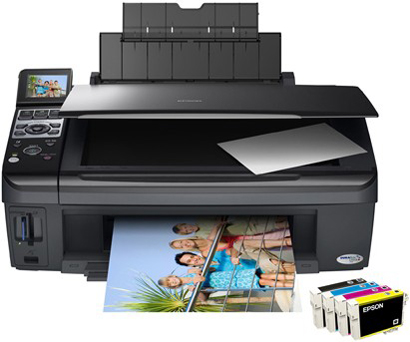Computers have made the creation of attractive and meaningful documents easy and fun, but the cost of printer maintenance can skyrocket if care is not taken to reduce the consumption of printing supplies. During your evaluation of printers to purchase look for models that will produce appropriate print quality and allow for the use of different papers, but also consider the price of replacement print cartridges.
An inexpensive printer requiring hard-to-find and highly specialized ink cartridges will work out much more expensive over time than a moderately priced printer with widely available cartridges or refillable cartridges. So when you’re buying your next printer, think about how you can balance the initial printer price against the anticipated maintenance costs, and then adopt these cost saving habits to reduce your expenses.
- Evaluate paper use: Know the percentage of overall printed pages that are final copies presented to external parties that must be of the highest quality. If most printed documents are drafts, purchase a comparable percentage of cheaper paper and load the same paper tray with this type of paper consistently. Set printer settings to send print jobs to this tray every time.
- Recycled papers: Less expensive papers that can be slightly yellowed in appearance are sufficient for draft printing use. Internal use of inexpensive paper will reduce costs over time. Load the printer correctly to ensure all draft copies are printed on less expensive paper.
- Limit the use of expensive papers: Use a separate paper tray for more expensive paper with a whiter appearance. When the more expensive paper must be accessed intentionally by those wanting to print a final copy, paper costs will drop noticeably over the course of time.
- Specialty papers: Pictures and graphics require photo paper and ink usage will be optimized because more ink is used when high resolution settings are used, but the paper will not drink the ink and affect print quality.
- Quality ink cartridges: The number of pages printed by a cartridge is higher when the manufacturer produces the cartridge. Beware of the cheap ink cartridges produced by foreign companies.
- Track the number of pages printed by a cartridge: A cheap cartridge is not less expensive if only half as many pages were printed before requiring replacement.
- Refillable ink cartridges: Certain manufacturers produce ink cartridges that can be easily refilled. Visit a refill store prior to purchasing the printer and find out which ones are refillable. Question anyone who says all ink cartridges can be refilled. Some cartridges have sponges inside that make the cartridge difficult to refill.
- Replace only empty ink cartridges: Do not anticipate an ink cartridge running out of ink. Wait until the ink quality is directly impacted before replacing the cartridge. Remaining ink is just as valuable as the new ink cartridge.
- Keep new cartridges sealed: After new ink cartridges are purchased, maintain the sealed plastic wrapper to prevent evaporation of the ink until the printer needs the new cartridge. When exposed to air, the cartridges will age as if they are in the printer and will not print correctly when placed in the printer.
- Default printer settings: Change the settings on the default printer icon to print in “draft” mode every time. Approximately half as much ink is used in “draft” mode. Set the printer to grayscale to print most pages with only black ink, which is less expensive than colored inks. When printing a final copy, the print settings can be changed to use higher resolution and color.
- Two-sided pages: Set the duplex printing option to print every document on both sides of the page by default.
- Multiple pages per page: Two pages can be printed on the same side of the paper, and two more pages can be printed on the back of the page to save paper when reviewing a document during the writing and editing processes.
- Outsource large print jobs: Depending on the print cost per page, sending a large document out to be printed could be much less expensive than the cost of ink and paper required to print a document of comparable quality in house.
- Buy prints of digital pictures: The cost of specialty papers and ink to print large numbers of photographs will be much higher than ordering prints of digital pictures for a photo printing service. Take advantage of their quantity discounts by grouping multiple orders.
When each new computer is added to the workplace, spend the time to set the print driver settings to optimize the use of paper and ink. Train computer users to participate in the cost reduction efforts, and monitor the costs weekly when these procedures are implemented initially. Report the results to everyone who prints and reward conscious efforts to reduce costs. Frequency of monitoring activities can be changed to monthly when the costs are within tolerance levels. Some of the money saved can be used to acknowledge new ideas that further reduce costs.
This guest post was written by James Adams who works for Cartridge Save as an impartial reviewer of Kodak supplies. James also enjoys posting about marketing and technology.

Hi,
I think Adams pointed out the best tips to reduce our expenses.
Siddharth thanks for sharing.
thanks for this tips , but i am using HP inkjet i have replaced printer cartridge many times ,
yeh.. thanks 🙂
nice tips, Thanks for sharing it 🙂
Thank you.. BTW, welcome to my blog 🙂
nice tricks…
i am impressed …surely gonna try in my printer….
Glad to hear !!
Its valuable tips , highly appreciated post .. I ll adobt this tips , coz a lot I m printing always in A3 Size 🙂 and wasted much paper or Ink ..
Cool, Glad that it helps you rasheed 🙂